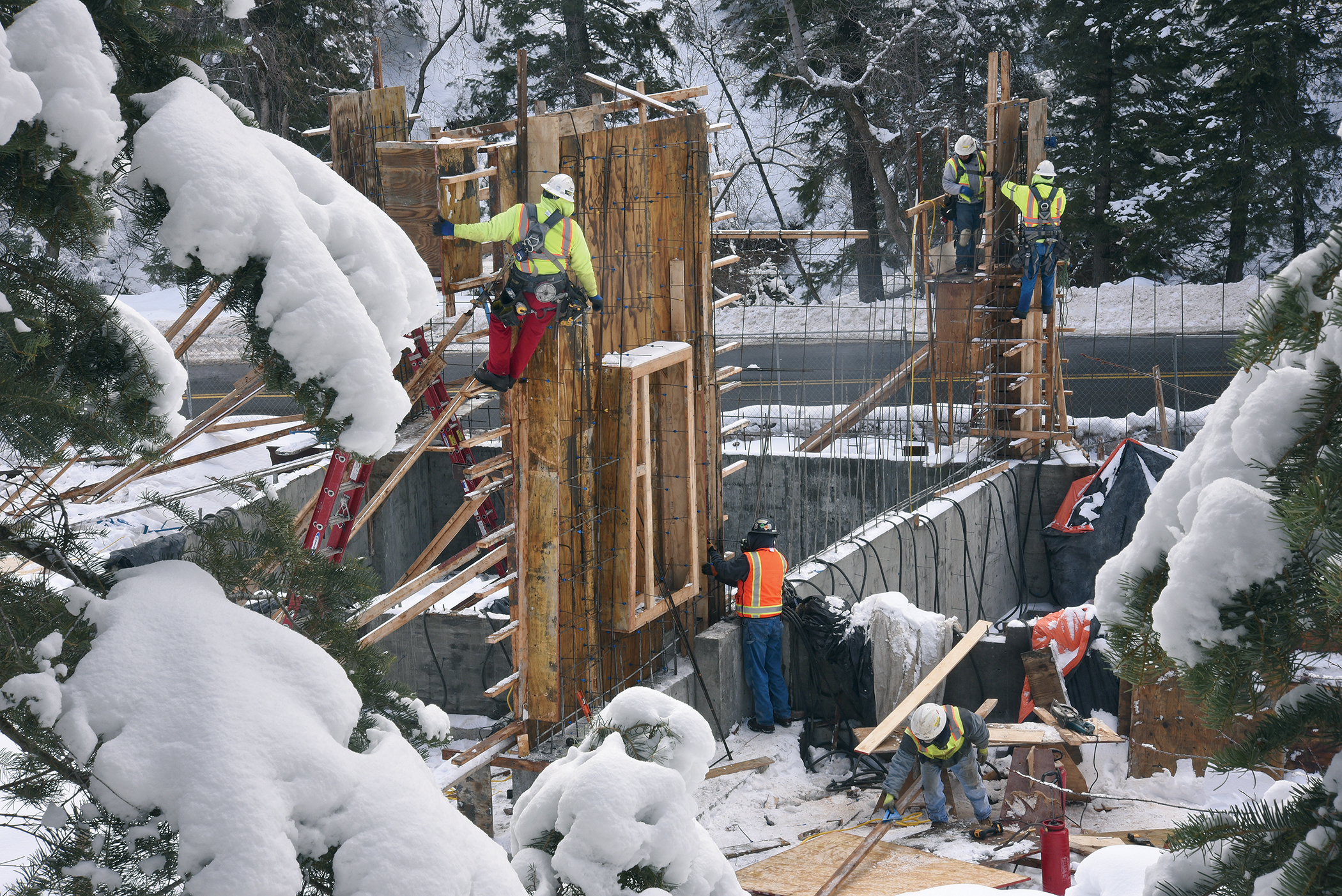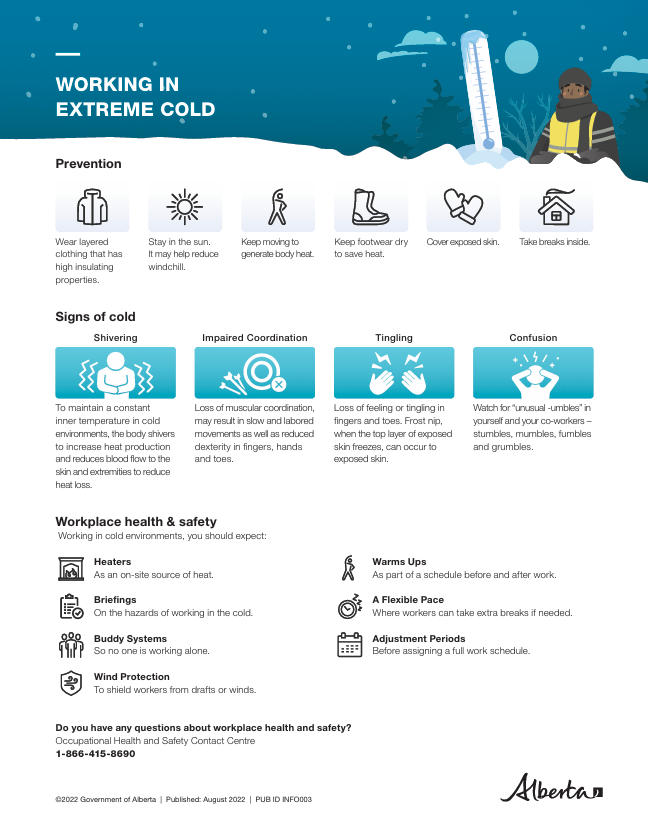
Buddy system among key tactics to protect workers from extreme cold, says Alberta official
November 2, 2023
By
Todd Humber

(Patrick/Adobe Stock)
Editor’s Note: OHS Canada’s special focus on keeping workers safe in extreme weather conditions continues. This time, we put the spotlight on the rules and regulations in Alberta, and best practices for keeping workers out of harm’s way. See the full coverage here.
The first step to solving a problem is to recognize it exists.
Trent Bancarz, an Edmonton-based spokesperson for Alberta Jobs, Economy and Trade, said it’s important to remember that plunging temperatures aren’t just uncomfortable — “cold weather is a workplace hazard in certain conditions and (employers) have to take steps to assess the risks and control to the extent extent reasonable or possible.
Employers can employ a variety of strategies to mitigate the risks associated with extreme cold. This can include providing an on-site heated area or a wind shelter, implementing a warm-up schedule, and ensuring a buddy system is in place.
“Ensure no one is working alone so that if something does happen out there, there is somebody with the worker and they’re not isolated in cold conditions,” he said. “The biggest thing is just educating workers about the hazards of working in the cold and encouraging them to take the steps that will help them do so safely.”

Infographic from the Alberta government on the health risks associated with working in the cold, what to watch for, and how to prevent cold stress.
Download a PDF copy of this infographic here.
Rules and regulations
When it comes to regulations, Alberta does not have specific laws pertaining to cold-weather work. However, there is a general requirement for employers to assess and control workplace health and safety hazards, which could include extreme cold, he said.
While the region’s laws don’t offer explicit provisions for cold weather, “there is a general requirement for employers to assess and control hazards,” Bancarz clarified.
If a worker feels that the conditions are too hazardous, they have the right to refuse to work — though he said it’s difficult to talk about hypotheticals as each situation is unique.
“Certainly, a worker has a right in Alberta to refuse dangerous work if they believe the work either can harm themselves or harm somebody else. So workers do retain that right,” Bancarz said.
What to wear
In terms of attire, Bancarz suggested layered and insulated clothing and an emphasis on keeping footwear dry.
“The key part is keeping the footwear dry. And people need to keep moving so that they’re generating body heat but avoid sweating,” he said.
Resources available to employers and workers
Bancarz also stressed the importance of educational resources for workers, especially for new Canadians who may not be familiar with extreme cold conditions.
“Our extreme temperatures webpage is available in six other languages other than English,” he said. The languages include Mandarin, Simplified Chinese, Punjabi, Tagalog, French, and Spanish, catering to a diverse workforce, he said.
Tips to stay safe in extreme cold
When you work in extreme cold, most of your body’s energy is used to maintain a consistent inner temperature. However, your body’s ability to adapt has limits. Cold stress occurs when your internal body temperature is lowered.
Early warning signs
Warning signs of cold stress include:
- feeling cold and shivering
- loss of feeling or tingling in fingers and toes
- trouble moving fingers, hands and toes (trouble doing tasks)
- frost nip (outermost layers of skin turn white)
- “unusual –umbles”, such as stumbles, mumbles, fumbles and grumbles
Worsening symptoms
- extreme shivering, and then shivering stops
- impaired coordination
- confusion
- frost bite (skin freezes deeply, turning blue or red)
- loss of consciousness
How to stay warm
- wear layered and insulating clothing
- cover exposed skin
- stay in the sun
- take breaks inside
- keep footwear dry
- keep moving to generate body heat (but avoid sweating)
What employers can do
When working in cold temperatures you should expect the following:
- on-site heaters or heated shelter
- work/warm-up schedule
- a flexible pace where workers can take extra breaks if needed
- shield workers from drafts or winds as much as possible
- a buddy system so no one works alone
- adjustment periods before assigning a full work schedule
- do hazard assessment, put controls in place for protection and educate workers on the hazards of working in the cold
Source: Government of Alberta